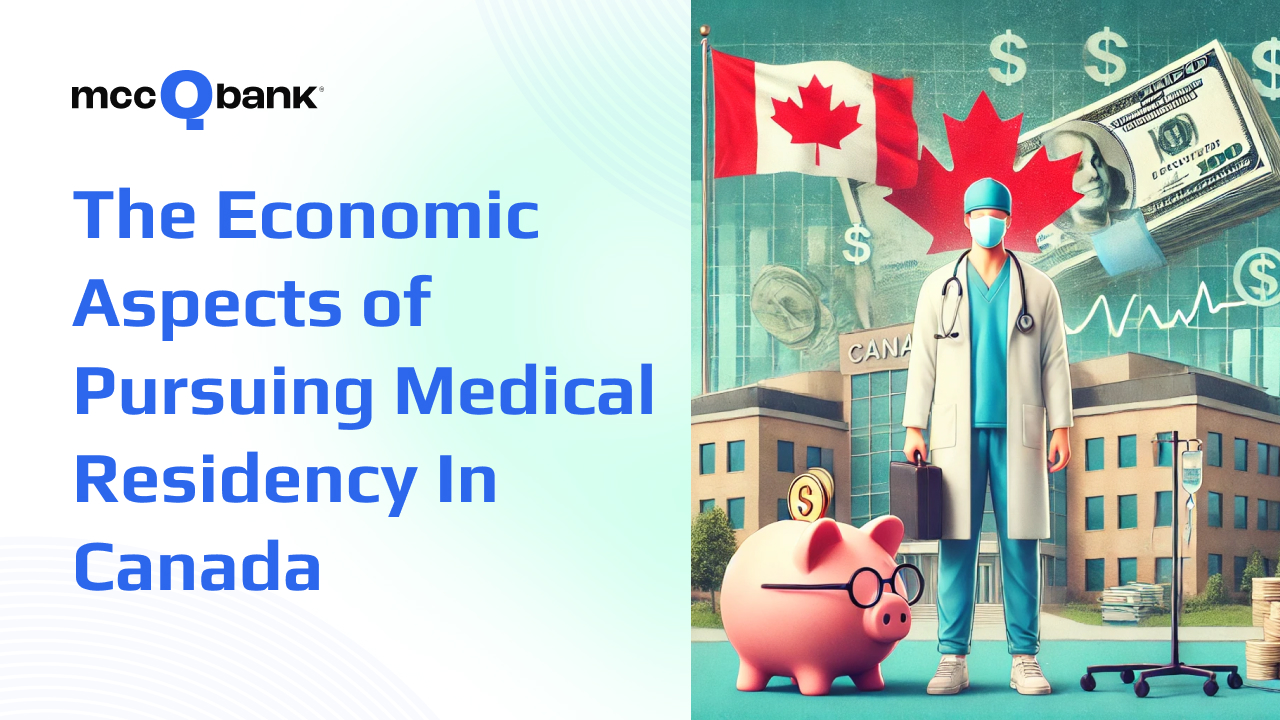Pursuing a medical residency in Canada is a crucial step for many aspiring physicians, offering a route to full medical licensure and the opportunity to specialise in a chosen field. However, the journey to becoming a resident doctor in Canada is not only a test of perseverance and skill but also a considerable financial undertaking. This blog explores the economic aspects of pursuing a medical residency in Canada, including costs, potential earnings, and financial strategies to effectively manage expenses.
Understanding the Costs
1. Education and Training Fees
- Medical School Tuition: Before residency, medical students must account for the cost of medical school, which can vary significantly. Canadian medical schools charge lower tuition fees for domestic students compared to international students. For instance, domestic students might pay between CAD 15,000 and CAD 25,000 per year, while international students can face tuition fees exceeding CAD 50,000 per year.
- Residency Application Costs: Applying for residency positions through the Canadian Resident Matching Service (CaRMS) involves fees for registration, match processing, and sending applications to various programmes. Additionally, attending interviews across the country can add substantial travel and accommodation expenses.
2. Licensing Exams
- Medical residents must pass several licensing exams, such as the Medical Council of Canada Qualifying Examinations (MCCQE) Part I and Part II. Each exam incurs a fee, cumulatively amounting to several thousand dollars.
3. Living Expenses
- The cost of living widely varies across Canada. Larger cities like Toronto and Vancouver have notably higher living costs compared to smaller cities or rural areas. Residency positions may not always align with the most affordable locations, compelling residents to manage higher living expenses.
Potential Earnings During Residency
Residents in Canada are remunerated for their work, although salaries vary by province and specialty. The average annual salary for a medical resident ranges from CAD 58,000 to CAD 70,000, depending on the year of residency. While this income helps manage daily expenses and debts, it’s often balanced against ongoing costs like student loans and living expenses.
Long-Term Financial Outlook
1. Earning Potential
- The earning potential post-residency is substantial. Specialists and surgeons in Canada can earn from CAD 250,000 to over CAD 500,000 annually, depending on their field and region. Primary care physicians typically earn from CAD 150,000 to CAD 300,000 annually.
2. Return on Investment
- Despite the high initial costs of medical education and residency training, the potential return on investment is significant, especially if financial management is prudent during the early career stages.
Financial Strategies for Residents
1. Budgeting and Financial Planning
- Effective budgeting and financial planning are crucial. Residents should consider working with a financial adviser to manage their budgets, plan for loan repayments, and prepare for future financial stability.
2. Loan Repayment Programs
- Some provinces offer loan forgiveness programmes to medical residents who agree to practise in underserved areas for a specified period. Additionally, national loan repayment options can help alleviate the burden of educational loans.
3. Scholarships and Grants
- Seeking scholarships, grants, and bursaries can also reduce some financial pressures. Various organisations offer financial support to residents who meet specific criteria, including research focus or community involvement.
Conclusion
Pursuing a medical residency in Canada is undoubtedly costly, but it is an investment in a highly rewarding career. Understanding the economic landscape, planning wisely, and utilising available resources can help mitigate financial stress and pave the way for a successful medical career. Aspiring medical residents should approach their training with a clear financial strategy to balance the demands of today with the promises of tomorrow.

Leave a Reply